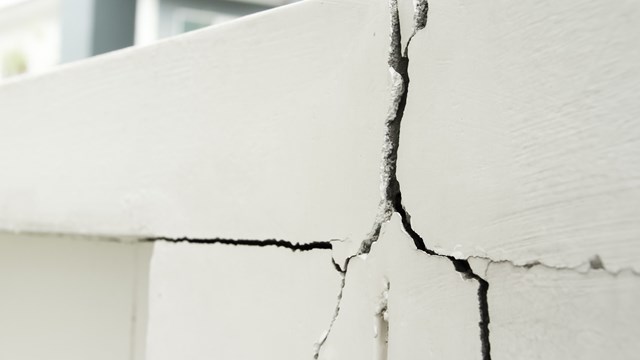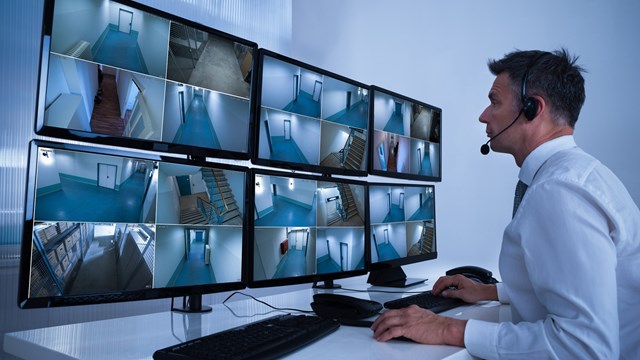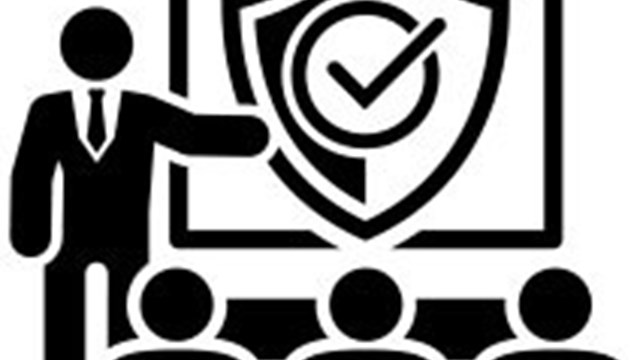Inside most multi-unit residential buildings, there are many areas that should be strictly off-limits to everyone but trained building staff—and we’re not just talking about the manager’s inbox. Machine rooms, elevator shafts, compactor areas, roofs, and other places used to house potentially dangerous equipment or materials are all spaces that must be kept secure for the safety of the residents—and to avoid costly liability issues for the building itself.
Forbidden Territory
When asked what the most dangerous area of a building is, Peter Grech of the New York Superintendents Technical Association (NYSTA) answers with a laugh, “The board room!”
In all seriousness, however, Grech says, “The boiler room is probably the most dangerous place in a building. You’ve got flammable fluids in there and potential for CO2 gasses leaking, which is truly a silent killer. If you have gas leaks or oil vapors escaping, that can lead to explosions. Plus, in the boiler room you’ve got a lot of moving parts, which makes it easy to have an accident.”
Grech adds that there’s no reason why anyone other than staff should be entering these rooms in the first place. “It’s a place everyone should stay out of, especially with older boiler rooms that use pumps or fans. There’s great potential for an accident if you don’t know what you’re doing—and your Average Joe doesn’t.”
Lock ‘Em Up
This potential for serious injury or even death to those who don’t understand the inner workings of hazardous areas makes security a high priority. The most common way to keep curious people out is by using a lock, of course—and locks have come a long way since the days when you used a three-dollar combination model on your junior-high locker.
Josh Goldman, president of Bargold Storage Systems—an on-site self-storage company with facilities in buildings throughout the New York metropolitan area—and a board member with the New York Association of Realty Managers (NYARM) says his company protects spaces (and people) with high security multi-locks that can’t be duplicated.
“We give keys to building staff in the event of pipe issues, for example, and we give keys to people who use certain locked spaces for storage. For clients who want to make sure that no one goes into a particular room after a certain time of night, we can use a timed lock that over-locks at a specific time—like midnight—and re-opens at 6:00 in the morning. The building manager holds override keys, and if someone accidentally gets stuck inside they can get out, but these locks help secure the space beyond your typical lock.”
Locks do a great job, but they’re not the only way to keep people out of hazardous areas. Wire gates, electronic entry systems, and explicit signage all help to send the message to shareholders that some places are not for them.
“Our compactor room is under lock and key also, and my building has a wire door partition between the boiler room and the basement corridor,” says Goldman. “The boiler room door is vented like a prison door, and our building managers maintain the security by putting it between the two areas under lock and key.”
Other Offenders
The boiler room and compactor room are perhaps the most dangerous places in a multi-family building, but there are many more places that should be kept off-limits. “All machine rooms should be locked,” says Grech. “Including certainly those for elevator maintenance. If there is an emergency hatch, you need to make sure it can be opened from the outside. These hatches are usually in the ceiling. The roof dump should also be inspected to ensure that it’s well-lit at night with a good security system. These areas should never be left open—and a good railing should also be in place.”
Grech notes that roof ventilation areas should also be checked for tight, secure corners that may have become loose with time and weathering and should be locked to prevent curious people from inspecting them more closely.
“The laundry room can be dangerous, too,” says Grech. “A slippery floor can be very dangerous. Signage is important even for places that you don’t consider to be highly hazardous. But in a laundry room, dryer vents are often neglected, and that’s potentially very dangerous. If lint gathers in the vents and a spark occurs, you’ve got a fire on your hands. Superintendents can forget about this, but it’s important to clean those vents at least every three years.”
Self-Governing Safety
Surprisingly, most safety tips like the ones offered above come from experienced managers and service providers—the law doesn’t have much to say about how certain areas should be protected. Howard Schechter of Schechter & Brucker PC, a Manhattan-based firm specializing in co-op and condo law says, “While there are areas in all buildings that are dangerous to the general public and are not made accessible to residents for that reason, closing off those areas is a management decision—it’s not required by law. In the case of a residential co-op or condo, the decision makers are the board.”
Schechter says that securing hazardous areas is a largely self-governing system. “The question of responsibility is a question of balancing the need for safety against the action taken,” he says. “The law requires owners to be reasonable in taking steps to protect individuals from injury on their property—particularly residents. If the board fails to put a reliable lock on a space where a child is able to push door open, they might be liable if there is an injury because steps were not taken to reduce that risk. You have to balance the reasonableness. A board can be held liable for not carrying out their duties to protect the people on the property.”
One law on the books that relates to dangerous areas in multifamily buildings is one that allows either the Department of Buildings or the HPD to enter such areas in case of emergency or inspection. To facilitate this, there must be a sign posted on the hazardous room’s door as well as in the lobby, stating clearly where the key is kept. If a superintendent is on the premises or a doorman is given this responsibility, no sign is required.
Meddle-Proof Machinery
Luckily, taking these precautions does a lot to deter people from meddling where they’re not meant to meddle. Also improving the safety of today’s shareholders and building maintenance professionals is the general improvement in machine technology.
“I remember in the old days we had garbage incinerators,” says Grech. “People would put closed cans into the incinerator and the pressure would build up and cause the can to explode. Explosions were frequent, and there were many men burned because of them. I’m glad those days are over.”
When asked if he could cite examples of recent cases of safety lapses in the city’s co-op and condo buildings, Schechter was thankfully without many examples. “We have many cases of people falling and slipping and getting injured,” he says, “but those are in public areas of buildings.” He’s quick to add that this doesn’t mean more serious—and preventable—accidents don’t happen however, and when they do, it’s the building that pays if proper precautions haven’t been taken.
“It’s about safety,” says Schechter. “If someone sues the building, ultimately your building’s insurance will go up. If there are three or four lawsuits, your premiums go up. You don’t want to pay for rising insurance cost, so if you notice that something doesn’t look safe, you should point it out.”
But Schechter also notes that there are proper ways to let building staff and administrators know when something doesn’t look right. “Managers have a lot of work to do,” he says. “They may not want to open themselves to calls about keys sticking in a door. But safety concerns are at the forefront—they’re a priority. I have a good relationship with my building manager, so if I noticed anything, I’d send an e-mail. Or I’d send the super an e-mail first, if I didn’t want to make him look bad. A lot of times, with lock questions or simple security things, try contacting your super first and don’t get manager involved—a lot of times, managers just turn it over to super, anyway.”
When it comes to securing hazardous areas in buildings, Grech puts it simply: “The number one problem is people’s natural curiosity. They think, ‘What’s this hole?’ and then they stick their hand in.”
So before curiosity can kill the cat—or scald it, or give it a nasty shock—check out all the potentially hazardous areas in your building, and do whatever’s necessary to make them safer and more secure.
Mary Fons is a freelance writer and a frequent contributor to The Cooperator.







Comments
Leave a Comment